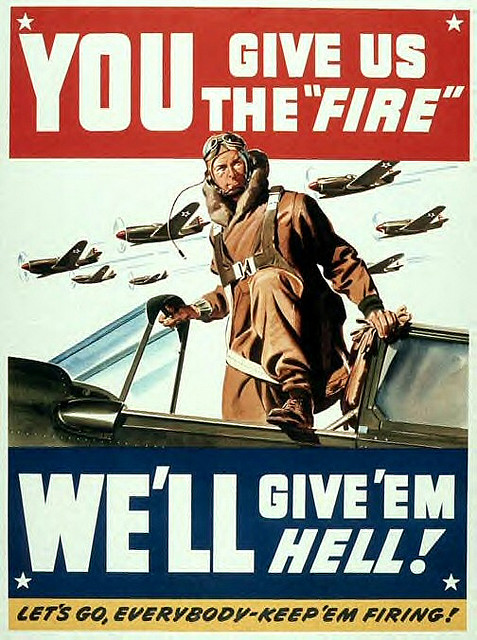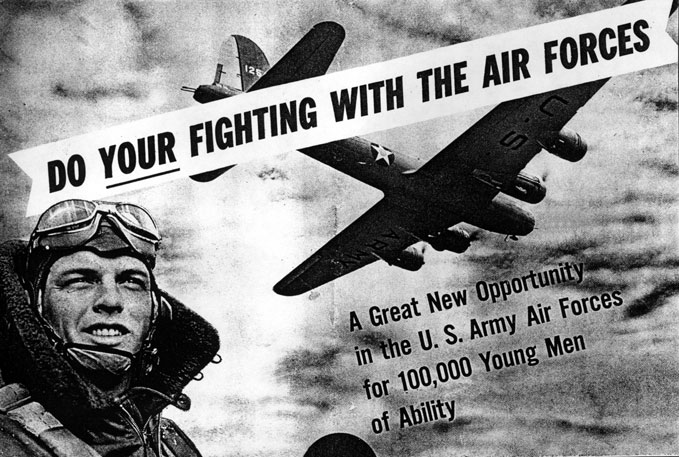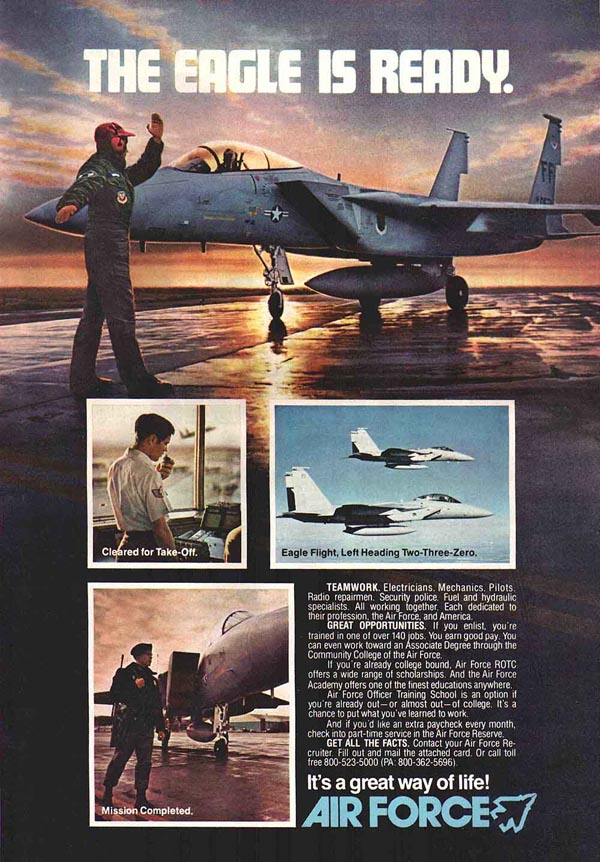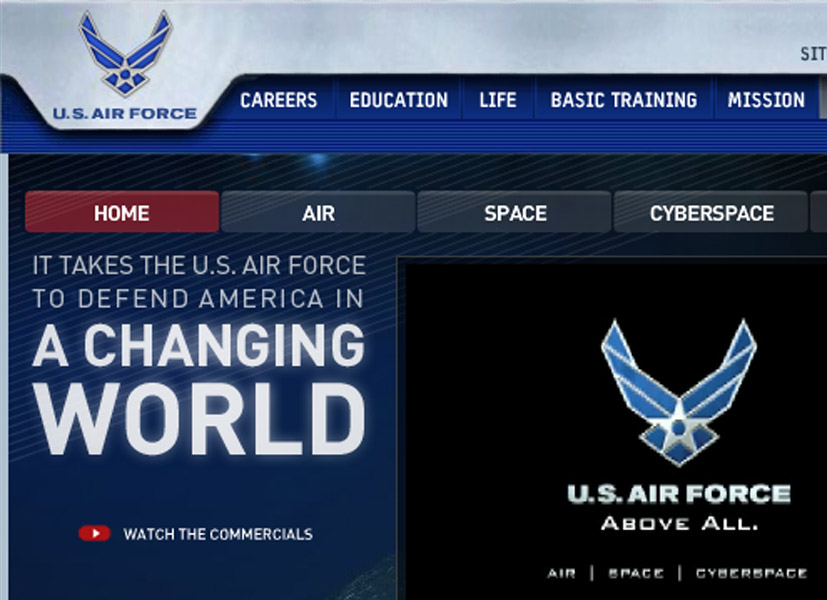 |  |
 |  |
 | The next advertisement is a 1978 magazine page for the Air Force. Unlike the first two images, the focus isn't as much on the pilot as it is on the planes themselves, even naming the plane "The Eagle." Underneath the interpellative image, the ad tells a story through three other images. The first is of an air traffic controller who has cleared the plane for takeoff. The next is of two planes flying, likely to a mission based on the context of the images. Finally the last shows a pilot standing next to the plane with the anchorage "mission accomplished" at the bottom. Next to these images is a small article telling the reader that the Air Force is a "great way of life" and why it is. I found this interesting because it claims that all a reader must do to "get all the facts" is call the number at the bottom of the page. However, to an educated reader, the catch-22 of this is that the "facts" are being provided by the institutional apparatus that is the United States Air Force, therefore the regime of truth behind the so-called "facts" are only supported by the institute to which they belong. |
| Finally, the last image is from the Air Force website. The Air Force uses the slogan "Above All" both as a catchy interpellative phrase and also to establish part of their regime of truth in stating that they are the best. The anchor to the left side of the site claims that the Air Force can protect America in a "changing world". Because this image is from the site, the institutional apparatus of the Air Force already assumes the attention of the audience, as well as the authority of creating certain truth claims about itself. One of the most recent advertising campaigns by the Air Force is all about futuristic technologies being developed and used. The popular slogan "It's not science fiction" is all over the website, which tends to reach out to a certain audience, specifically young males, much like the other ads. The audiencing is much more covert in this instance than in many others, however, and even though the target audience is still a male audience, it does not explicitly cite a gendered target audience. |  |
The use of the futuristic style is a form of propaganda in itself. It plays into the
now common role of entertainment through a medium in order to advertise a certain cause, in this case the United States
Air Force. According to Combs, this kind of propaganda is produced
within "social order as a creature of the manipulation of
"popular reality" made into a kind of pervasive media propaganda" (Combs, Film Propaganda and American Politics: An Analysis and Filmography)
| Previous | Home | Next |